Anglo-Saxon religion may refer to :
- Anglo-Saxon paganism
- Christianity in Anglo-Saxon England
- Anglo-Saxon mission in the Frankish Empire during the 8th century
- Anglicanism
- Revival of Anglo-Saxon paganism as part of Heathenry (new religious movement)
Anglo-Saxon religion may refer to :
Anglo-Saxons were Germanic tribes that settled in early medieval England.

The Wheel of the Year is an annual cycle of seasonal festivals, observed by a range of modern pagans, marking the year's chief solar events and the midpoints between them. Modern pagan observances are based to varying degrees on folk traditions, regardless of the historical practices of world civilizations. British neopagans popularized the Wheel of the Year in the mid-20th century, combining the four solar events marked by many European peoples, with the four midpoint festivals celebrated by Insular Celtic peoples.
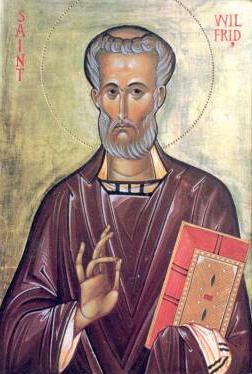
Year 665 (DCLXV) was a common year starting on Wednesday of the Julian calendar. The denomination 665 for this year has been used since the early medieval period, when the Anno Domini calendar era became the prevalent method in Europe for naming years.
Odinism is a term for Heathenry, a modern pagan religion, typically used by those who hold to "folkish" or race-centric ideologies.
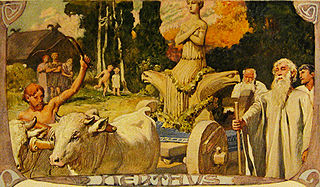
Germanic mythology consists of the body of myths native to the Germanic peoples, including Norse mythology, Anglo-Saxon mythology, and Continental Germanic mythology. It was a key element of Germanic paganism.
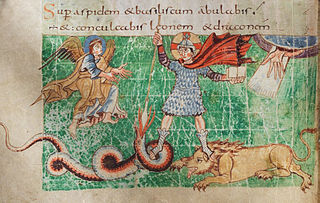
The Germanic peoples underwent gradual Christianization in the course of late antiquity and the Early Middle Ages. By AD 700, England and Francia were officially Christian, and by 1100 Germanic paganism had also ceased to have political influence in Scandinavia.

Seax-Wica, or sometimes Seax Witchcraft, is a tradition of neopagan practice blending aspects of Wicca with the iconography of Anglo-Saxon paganism, while not seeking to reconstruct the early mediaeval religion itself.

Anglo-Saxon paganism, sometimes termed Anglo-Saxon heathenism, Anglo-Saxon pre-Christian religion, Anglo-Saxon traditional religion, or Anglo-Saxon polytheism refers to the religious beliefs and practices followed by the Anglo-Saxons between the 5th and 8th centuries AD, during the initial period of Early Medieval England. A variant of Germanic paganism found across much of north-western Europe, it encompassed a heterogeneous variety of beliefs and cultic practices, with much regional variation.
Sexred, or Sexræd, and Sæward are two brothers who jointly served as king of the East Saxons after the death of their father Sæbert.
Continental Germanic mythology formed an element within Germanic paganism as practiced in parts of Central Europe occupied by Germanic peoples up to and including the 6th to 8th centuries. Traces of some of the myths lived on in legends and in the Middle High German epics of the Middle Ages. Echoes of the stories, with the sacred elements largely removed, may appear throughout European folklore and in European fairy tales.
Frig may refer to:

The Christianisation of Anglo-Saxon England was the process starting in the late 6th century by which population of England formerly adhering to the Anglo-Saxon, and later Nordic, forms of Germanic paganism converted to Christianity and adopted Christian worldviews.
Magic in Anglo-Saxon England refers to the belief and practice of magic by the Anglo-Saxons between the fifth and eleventh centuries AD in Early Mediaeval England. In this period, magical practices were used for a variety of reasons, but from the available evidence it appears that they were predominantly used for healing ailments and creating amulets, although it is apparent that at times they were also used to curse.

An Anglo-Saxon burial mound is an accumulation of earth and stones erected over a grave or crypt during the late sixth and seventh centuries AD in Anglo-Saxon England. These burial mounds are also known as barrows or tumuli.
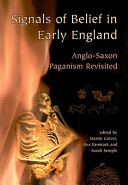
Signals of Belief in Early England: Anglo-Saxon Paganism Revisited is an academic anthology edited by the British archaeologists Martin Carver, Alex Sanmark and Sarah Semple which was first published by Oxbow Books in 2010. Containing nine separate papers produced by various scholars working in the fields of Anglo-Saxon archaeology and Anglo-Saxon history, the book presents a number of new perspectives on Anglo-Saxon paganism and, to a lesser extent, early Anglo-Saxon Christianity. The collection – published in honour of the archaeologist Audrey Meaney – was put together on the basis of a conference on "Paganism and Popular Practice" held at the University of Oxford in 2005.
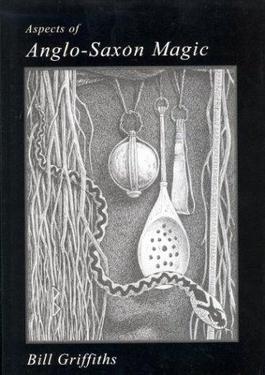
Aspects of Anglo-Saxon Magic is a study of Anglo-Saxon paganism and the role of magic in Anglo-Saxon England that was written by the English poet and independent scholar Bill Griffiths. It was first published in 1996 by Anglo-Saxon Books, and later republished in a revised edition in 2003.
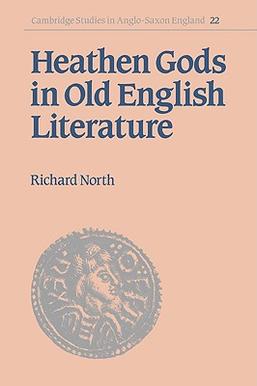
Heathen Gods in Old English Literature is a historical study of the literary references for several pagan deities in Anglo-Saxon England. Written by the English studies scholar Richard North of University College London, it was first published by Cambridge University Press in 1997. The book was released as the twenty-second monograph in the Press' series Cambridge Studies in Anglo-Saxon England, edited by Simon Keynes, Michael Lapidge and Andy Orchard. Prior to the book's publication, North had previously authored other studies of Anglo-Saxon paganism, such as Pagan Words and Christian Meanings (1991).
Wotanism may refer to:

Trees hold a particular role in Germanic paganism and Germanic mythology, both as individuals and in groups. The central role of trees in Germanic religion is noted in the earliest written reports about the Germanic peoples, with the Roman historian Tacitus stating that Germanic cult practices took place exclusively in groves rather than temples. Scholars consider that reverence for and rites performed at individual trees are derived from the mythological role of the world tree, Yggdrasil; onomastic and some historical evidence also connects individual deities to both groves and individual trees. After Christianisation, trees continue to play a significant role in the folk beliefs of the Germanic peoples.